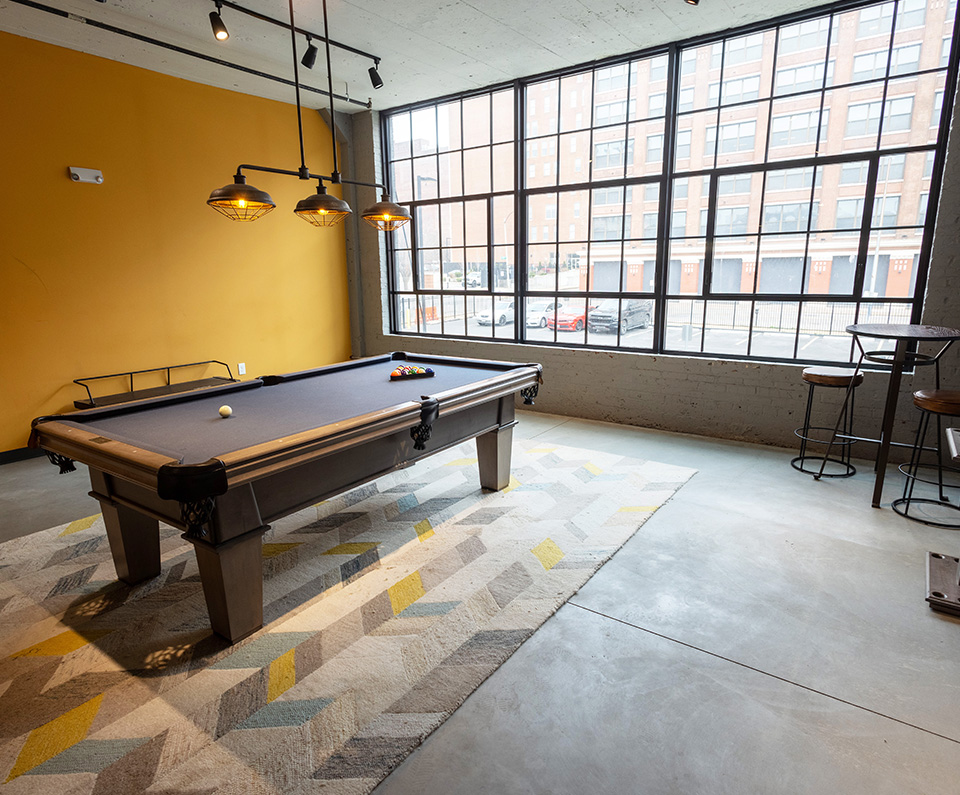
Covid-19 hasn’t disrupted progress of a $35 million ground-up office development in Creve Coeur that’s secured its first tenant.
FM Global, a worldwide insurance company that’s currently based at Maryville Centre Office Park, is set to take the top floor of the four-story, 110,000-square-foot Class A office building at 12645 Olive Blvd. Construction of the project, called Edge@West, is underway, and FM Global could move in by November, said developer Larry Chapman.
When development of Edge@West launched over a year ago, its aim was to redefine the suburban office building — one that could attract technology and creative companies with open floor plans and amenities that are typically found in urban spaces such as the city of St. Louis’ Cortex district in Midtown.
Those modern spaces have netted higher than average lease rates for the region — $36.62 per square foot in Midtown compared with the metro area’s overall average of $25.43 for Class A office, according to the most recent research from JLL. In suburban St.Louis, Class A office space nets average rent of $26.23 per square foot.
CBRE First Vice President Tom Ray, who is marketing the project, said the signing of FM Global, neither a technology nor creative firm, underscores the universality of tenant demands with office space.
“To land a longstanding insurance company, that says something about the desire for amenities,” Ray said.
Chapman is taking the uncertainties of what a post-Covid office environment will look in stride, adding that several building elements were already designed to be touchless, he said, such as self-opening doors and swinging bathroom entrances so people don’t have to touch a handle to open the doors. Chapman also believes the outdoor amenities, like a putting green, bocce ball and basketball court, as well as rolling doors to open up the building in warmer months, will have newfound appeal for those sick of being stuck inside.
Meanwhile, Ray continues to market Edge@West for more tenants. That’s an area that Covid-19 has affected — the typical broker gatherings to show off the development and court prospectives haven’t happened due to stay-at-home orders.
Edge@West
Developer: Larry Chapman
General contractor: Clayco
Architect: LJC
Broker: Tom Ray of CBRE
Credit:
Steph Kukuljan | May 05, 2020
St. Louis Business Journal


All this has fired my curiosity about social media. It is pretty easy to see the power that these platforms have and their ability to create perceptions, which can quickly become reality. When searching for information, the quicker it’s found, the better. It is amazing how easy it is to believe that even small companies are now large and important based on social media. With the right hashtag on peak trends and the right influencer mentions, it seems anything is possible — for good or ill. Results on social media can be both rapid and ruthless. And a bad impression can be very difficult to overcome.
This leads me to thinking about downtown St. Louis and St. Louisas a region. In particular, I thought about current, difficult issues such as crime, lack of growth and negative perceptions of our region generally. Simply typing in the words “St. Louis” into a search engine often yields negative content among top results, while finding good news and positive things about St. Louis takes time and effort.
It seems to me that efforts to promote St. Louis, whether it’sGreater St. Louis Inc. or the city itself, should go out of its way to hire a large team of the best and most talented social media marketers and content creators (local or not), to develop the most robust social media campaigns possible. Every effort should be made to engage online influencers and advocates to advance and promote the good stories about St. Louis — not so that we don’t have to face our problems, but so that the narrative isn’t unfairly dominated by them. I honestly think most of these promotion budgets should be focused on social media, along with other digital tools such as search engine optimization. As important, entities like GSL, Explore St. Louis, the city, county and others need to work in concert with each other and pool their efforts. St. Louis has a long history of business and booster groups running their own shows, which wastes limited resources and can blunt the positive impact we all want to achieve. The creation of GSL is to some extent a recognition of this fact, but there are still lots of other players. To succeed in a social campaign, as in so many other things, we need to set aside our parochial interests and collaborate and, perhaps most important, do things differently.
This is something every business and person that cares about St.Louis can and should help with.
If we can promote enough “good news” stories, it would result in outsiders and even ourselves becoming more upbeat and supportive of the St. Louis community and more confident in its future. This won’t happen overnight, but it can happen. By changing not just the perspective of others, but our own perspective about St. Louis, we can help shape our future for the better. We can be among the top of more fun “cool places to live”national lists, instead of all the lists we don’t want to be on.
It also seems like the best and brightest among us in this arena tend to be younger and ready to change, which is exactly what we need to revitalize and improve every aspect of St. Louis.
I have been a brick-and-mortar real estate developer for more than43 years, and personally believe I’ve done a lot of good for the community. But what’s next? How do we better leverage evolving technologies born from the internet to improve and benefit St.Louis?
Is social media a big part of that answer? I think so.


